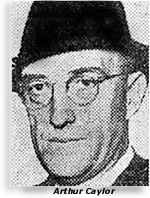 When the war is over and
the Japanese come back to Japtown—the date to be announced later—they’re
likely to discover that Japtown doesn’t live here anymore. Indeed, the
Japanese—aliens and citizens alike—may find that San Francisco has grown
cold-shoulderish to their return at all. When the war is over and
the Japanese come back to Japtown—the date to be announced later—they’re
likely to discover that Japtown doesn’t live here anymore. Indeed, the
Japanese—aliens and citizens alike—may find that San Francisco has grown
cold-shoulderish to their return at all.
For there seems to be a sub-surface meeting-of-minds if not an actual campaign among certain influential groups, some of them official, to extend the cleanup Japantown campaign in such a way as to build a Japanese wall around this once tolerant and international city. Just as some governors have been swearing to High Heaven that no Japanese shall come into their states, b’gosh, so certain San Franciscans begun voicing the slogan that the Japanese shall never come back. This may be easier than it seems. City officials, for instance, will probably find it simpler than expected to move in on Japtown. Of the 728 buildings in the 24 blocks of Japtown, it turns out, only 133 are owned by Japanese. Whites own nearly all the rest—580 of them, to be exact. Plenty of pressure can be put on the owners to make it a "no vacancy" area so far as the Japanese are concerned. Four per cent of the buildings
are already subject to condemnation and another 12 per cent are in need
of major repairs. Even those which are in good shape often have plumbing
which fails to meet the code. Many are not rat-proofed. So many ways exist
to keep unco-operative owners on the pan.
This is not only the case in the homes of the swank but also in the homes of women-who-do-their-own-work. One had a Japanese girl who came in for parties. Another had a Japanese woman who looked after the baby whenever a movie was in order. A third had a Japanese man who occasionally washed the woodwork and did heavy cleaning. All, all are gone—and the effort to find replacements is intense. In fact, the President’s failure to freeze wages likely will benefit no group more than San Francisco house-workers of all sorts—maids, cooks, janitors, house-boys, laundresses, baby-tenders, and what-have-you. They don’t have to go within a mile of a slot machine to hit the jack-pot. Incidentally, San Francisco may never again be in such good shape for a wage-freeze order. Anyhow, Chamber of Commerce figures show that while the March U.S. Department of Labor index found cost of living 13 per cent above that of last March, the number of jobs has increased by half and the San Francisco payroll has doubled. The San Francisco News April 29, 1942 Go to the
Japanese Internment page.
|